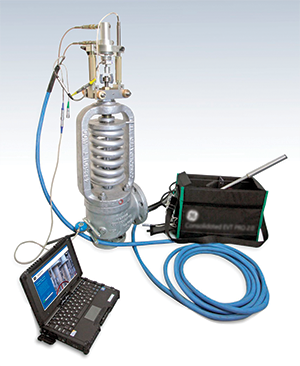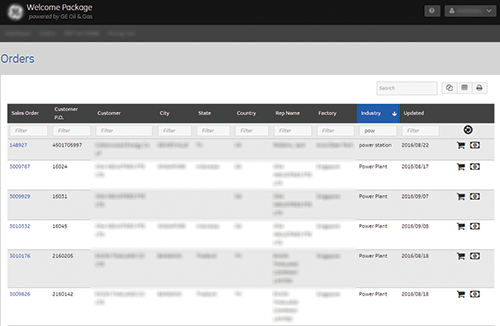Tying our World Together with Digital Threads
The words, “maintenance” and “repair” are so common in everyone’s vocabulary that we use them almost daily, and sometimes we’re not exactly happy about it.
#maintenance-repair
So let’s dream a bit and consider the following scenario: You approach an Engineering, Procurement, Construction agreement to engage in an expansion of your plant. In the expansion, a multitude of valves and related equipment are needed and an order is placed. The valves/equipment are sized, configured, built and shipped to the site. Upon shipment, an electronic thread, “welcome package” is sent to the service team about the shipment. The thread is opened and all the information related to this equipment is at the fingertips of that team in a digital format. A click of a button and the information is downloaded to an asset management system to track and maintain all service, test and repair events. That is the start of the digital thread for this equipment. As the equipment goes into service, information is collected via the digital devices, which send alerts on a variety of events (i.e., friction, cycles, response, etc.). The alerts push their way through the asset management tool prompting on- or off-site support to take action. Over the course of time, all the information for this equipment is in a single location and retrievable with any smart device, 24/7 across the globe. In other words, a “medical record” for the equipment has been created and will be maintained as events occur. Data of all sorts is collected and monitored, all in an effort to make maintenance and repair easier and simpler.
In the valve world, data use should reduce barriers in the past to maintenance and repair efforts. The keys to this process are available today.
They include:
- The foundation of this journey is a strong asset management tool. This tool needs the ability to seamlessly interface to the cloud for data, which means availability 24/7 across the globe. It should also be agnostic to the equipment and have powerful analytics to manage outages, notifications and upgrades, but be smart enough to run what-if scenarios or calculate a metric such as mean time between failure or some other measurement. (See VALVE Magazine article “Asset Management: Plant Managers Best Friend,” Fall 2011 for helpful tips on this.)
- Second, the company must have the strength and capability to put this digital thread together and manage it—from the application engineering process to product design to the factory build to the service support. Information collected at the key stages of an asset’s life will need to be used in the data analytics stage later. This is an enormous task of integration across devices, tools and software.
- Third, the next generation of tools, devices and technical support must be used to collect and communicate in the digital thread. For example, to test a safety valve or a control valve, we need an off-line diagnostic test device. After running the test, the tool should upload the information via the cloud to communicate back to the asset management platform and show the valve tested in a real-time video. This off-line diagnostic tool integrated back to the asset management tool adds more data on the asset and its digital thread. This is an example of machines talking to machines to produce data and results.
- Finally, one of the critical aspects for making this all happen is highly trained and certified service and support technicians who can navigate the tools, interrogate the data and have the skills to analyze that data in light of how best to repair it.
In summary, what once seemed like something out of a science fiction movie is becoming reality. “Maintenance” and “repair” have been joined with “data,” “analytics,” “tools,” and “the cloud” as everyday parts of our world. But when all these words are integrated together, we have a digital thread that is so powerful to the end user that it will predict the next maintenance or repair point/period so that plant uptime can be optimized to increasingly higher levels.
Gary Ostrowski is senior aftermarket product manager for GE Oil & Gas (www.geoilandgas. com) Reach him at Gary.Ostrowski@ge.com.
RELATED CONTENT
-
Valve Selection for Bypass of Control Valves: A Case Study
A bypass line including a bypass valve is typically installed to provide continuous operation in case of regular maintenance of a control valve.
-
Creating a Standard for Severe Service Valves
Severe service valves are offered in several standard designs, including non-return, isolation and control types.
-
Understanding and Selecting Valve Flanges, Pt. I: Design and Standards
Because flanges allow the assembly and maintenance of system components without the need for cutting and welding pipe, they play an important role in piping systems.












 Unloading large gate valve.jpg;maxWidth=214)